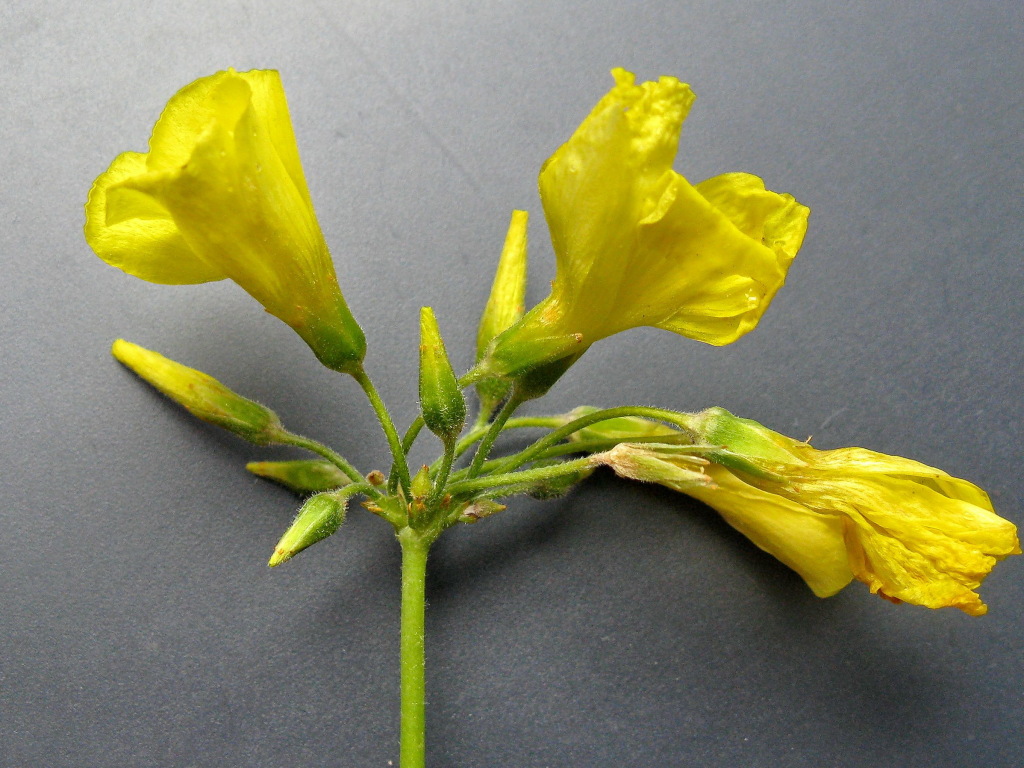Oxalidaceae
Herbs (in Victoria), rarely shrubs or trees; rhizomes, tubers or bulbs often present. Leaves alternate, radical or cauline, petiolate or rarely sessile, palmately or less commonly pinnately compound, mostly 3-foliolate, sometimes 1-foliolate or reduced to a phyllode (not in Victoria); leaflets entire or incised; stipules usually present, connate to base of petiole. Inflorescences usually umbellate cymes, occasionally solitary flowers, sometimes appearing racemose; bracts and bracteoles usually present. Flowers regular, bisexual; sepals 5, free or united, imbricate; petals 5, free or fused at base; stamens usually 10 (rarely 15), in 2(or 3) whorls, outer whorl opposite petals and sometimes fused basally, anthers dorsifixed, versatile, opening by 2 longitudinal slits; ovary superior, 3–5-celled, ovules 1-many per cell, axile, pendulous, styles 3–5, usually free, persistent, stigmas capitate, shortly 2-lobed. Fruit a loculicidal capsule or berry; seeds compressed, often ribbed, ejected explosively by a fleshy elastic aril.
5 genera with c. 600 species, virtually cosmopolitan, chiefly in tropical and temperate regions, particularly South Africa, Central and South America; 2 genera and 31 species in Australia.
Conn, B.J.; Jeanes, J.A.; Richards, P.G. (1999). Oxalidaceae. In: Walsh, N.G.; Entwisle, T.J., Flora of Victoria Vol. 4, Cornaceae to Asteraceae, pp. 207–218. Inkata Press, Melbourne.
 Spinning
SpinningStajsic, V. (2020). Oxalidaceae. In: Kodela, P.G., Flora of Australia, pp. –. Australian Biological Resources Study, Canberra.



